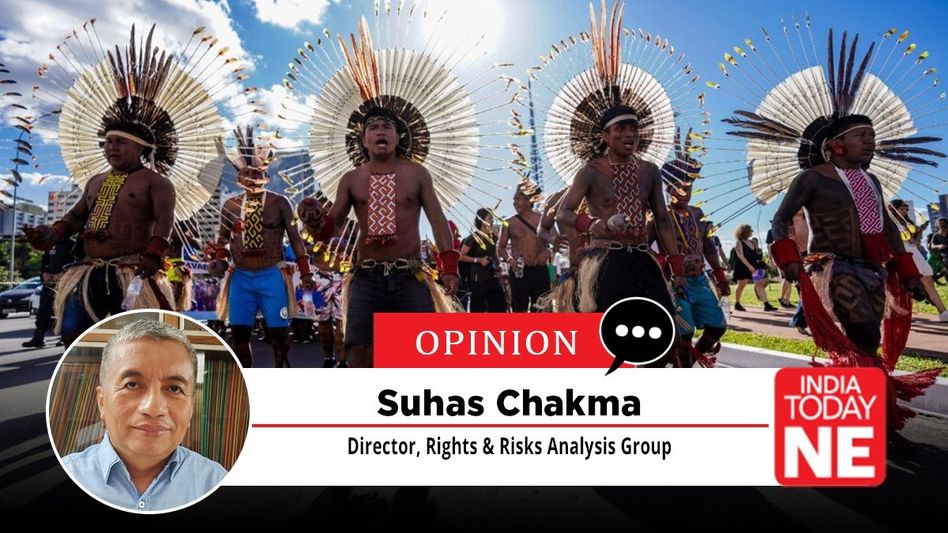Nagaland’s indigeneity identification targets minority indigenous peoples
On 7 October 2025, the Government of Nagaland put on hold the recruitment process for police constable posts earmarked for the four Non-Naga Tribes - Garos, Kacharis, Mikirs (Karbis) and Kukis - until the completion of an enumeration exercise for determination of Indigenous Inhabitants of the State from these communities in the State.

On 7 October 2025, the Government of Nagaland put on hold the recruitment process for police constable posts earmarked for the four Non-Naga Tribes - Garos, Kacharis, Mikirs (Karbis) and Kukis - until the completion of an enumeration exercise for determination of Indigenous Inhabitants of the State from these communities in the State. The State government stated, “the Constitution (Nagaland) Scheduled Tribes Order, 1970, recognizes that apart from the Naga tribes, these four Non-Naga communities are also Scheduled Tribes of Nagaland, provided they are residents of the State. The order acknowledges the presence of these tribes who had been inhabiting Nagaland prior to its creation on December 1, 1963”.
The enumeration was undertaken on the ground that “since these tribes (Garos, Kacharis, Mikirs (Karbis) and Kukis ) also reside in other North Eastern States, many of which share borders with Nagaland, cases of migration into Nagaland after Statehood cannot be ruled out. It noted that some individuals may have been wrongly issued Scheduled Tribes (ST) and Indigenous Inhabitant Certificates, making it necessary to identify and verify those who had genuinely settled in the State before 1963 along with their direct descendants.” The Register of Indigenous Inhabitants of Nagaland (RIIN) Commissionestablished in July 2019 in the wake of the anti-Citizenship Amendment Act (CAA) agitation in 2019 recommended to conduct an Enumeration Exercise of the Kuki, Kachari, Garo and Mikhir tribes who had settled in Nagaland prior to 1 December 1963 and the Home Department vide Order No. CON/RIIN/50/2020 dated 20 September 2024 decided to conduct the enumeration. However, the Gauhati High Court on a writ petition filed by the non-Naga tribal organizations stayed the enumeration.
Both the enumeration for determination of indigenous peoples and the withholding the recruitment process for police constable posts earmarked for the four Non-Naga Tribes are unlikely to meet the constitutional validity test.
With respect to enumeration for determination of indigeneity of Garos, Kacharis, Mikirs (Karbis) and Kukis and not the Nagas is contrary to the Article 14 relating to equality before law, Article 15 relating to prohibition of discrimination on grounds of religion, race, caste, sex or place of birth, Article 16 relating to equality of opportunity in matters of public employment and Article 21 relating to right to life.
The government of Nagaland refers to 1 December 1963 as the cut-off date to determine indigeneity among the non-Naga scheduled tribes but there is no such reference in the Constitution (Nagaland) Scheduled Tribes Order, 1970 which states that “the tribes or tribal communities, or parts of, or groups within, tribes or tribal communities, specified in the Schedule to this Order, shall, for the purposes of the Constitution, be deemed to be Scheduled Tribes in relation to the State of Nagaland so far as regards members thereof resident in that State i.e. Naga, Kuki, Kachari, Mikir and Garo.” the Constitution (Nagaland) Scheduled Tribes Order, 1970 makes no reference to 1 December 1963 as the cut-off date but merely refers to residents in that State i.e. Naga, Kuki, Kachari, Mikir and Garo. Each of these tribal groups are treated as equal without exceptions.
Furthermore, the Government of Nagaland contends that the Garos, Kacharis, Mikirs (Karbis) and Kukis ) also reside in other North Eastern States, many of which share borders with Nagaland, cases of migration into Nagaland after Statehood cannot be ruled out. But, as per the Constitution (Scheduled Tribes) Order of 1950, the Nagas are also listed as Scheduled Tribes in Arunachal Pradesh, Manipur, Mizoram and Nagaland and the possibility of the migration of the Nagas from other States cannot be ruled out.
More critically, a tribal is identified not on the basis of existence of his forefathers based on the date of creation of a State or Union Territory. A tribal, whether Naga, Kuki, Kachari, Mikir and Garo, is identified based on his membership to a community which possesses loosely defined tribal characteristics. Any Naga, Kuki, Kachari, Mikir and Garo born in Nagaland will not become non-tribal because of the origin of his forefathers. Therefore, enumeration of the “direct descendants from Garo, Kuki, Kachari and Mikir (Karbi) settled in the State of Nagaland prior to 1st December, 1963 so as to determine their eligibility for issuance of IIC/PRC” is contrary to very identification of a tribal.
In fact, the enumeration of the Nepali/Gorkhas who are permanently settled in Nagaland prior to 31st December 1940 and their direct descendants is also flawed for a number of reasons. Since the Bengal Eastern Frontier Regulation came into force in 1873, why is the cut-off date of 31st December 1940 and not 1873? By definition, the Inner Line Permit under the BEFR applies to those who are “outsiders” and are required to seek permission to visit and it does not apply to those who are born and therefore, not outsiders. Further, since the Inner Line Permit was extended to entire Dimapur only in December 2019, can the BEFR be applied retroactively from 31st December 1940? Furthermore, there were 74,753 Bengali speaking persons, 14,289 Bhojpuri speaking persons, and 31,441 Hindi speaking persons in Nagaland as per 2011 census but why single out 43,481 Nepalis speaking persons?
The classification of the 1,200 police constable posts into 1,176 posts for the Indigenous Naga Tribes and 24 posts reserved for the four Non-Naga Tribes is also not provided by the Constitution (Nagaland) Scheduled Tribes Order, 1970 or reservation policies of the State. The State reservation policy made separate reservation for the Backward Tribes from the Naga Tribe but there is no separate reservation for the Kuki, Kachari, Mikir and Garo. Under the Constitution of India, the Scheduled Tribes are considered as a homogenous group with the Central government providing for 7.5% reservations for the Scheduled Tribes. There is no community wise reservation for example for the Nagas or Mundas within 7.5% reservation.
The Supreme Court of India earlier in 2004 in E.V. Chinnaiah vs. State of Andhra Pradesh held that sub-classification of the Scheduled Tribes who are a homogenous group is unconstitutional. The Supreme Court of India in its judgment in State of Punjab & Ors Versus Davinder Singh & Ors in August 2024 however allowed States the authority to sub-classify the Scheduled Castes and the Scheduled Tribes for the purpose of reservations for upliftment from backwardness reflected from regarding the inadequacy of representation of the subclass and “based on empirical data and historical evidence of systemic discrimination, rather than arbitrary or political reasons”. The Supreme Court also stated that while allowing sub-classification, the state cannot earmark 100 per cent reservation for a sub-class.
The non-Naga Scheduled Tribes in Nagaland are literally microscopic with 18,392 Kuki speaking persons, 4,863 Kachari speaking persons, 2,351 Garo speaking persons and 584 Mikir speaking persons in Nagaland as per 2011 census.As per the State of Punjab & Ors Versus Davinder Singh & Ors in August 2024, they may require adequate representation though sub-classing if empirical data and historical evidence of systemic discrimination suggest.
Across the North East, the identification of indigeneity often ends up victimising the minority indigenous peoples. It is essential to ensure respect for human rights and protect minority indigenous peoples.
Copyright©2025 Living Media India Limited. For reprint rights: Syndications Today









